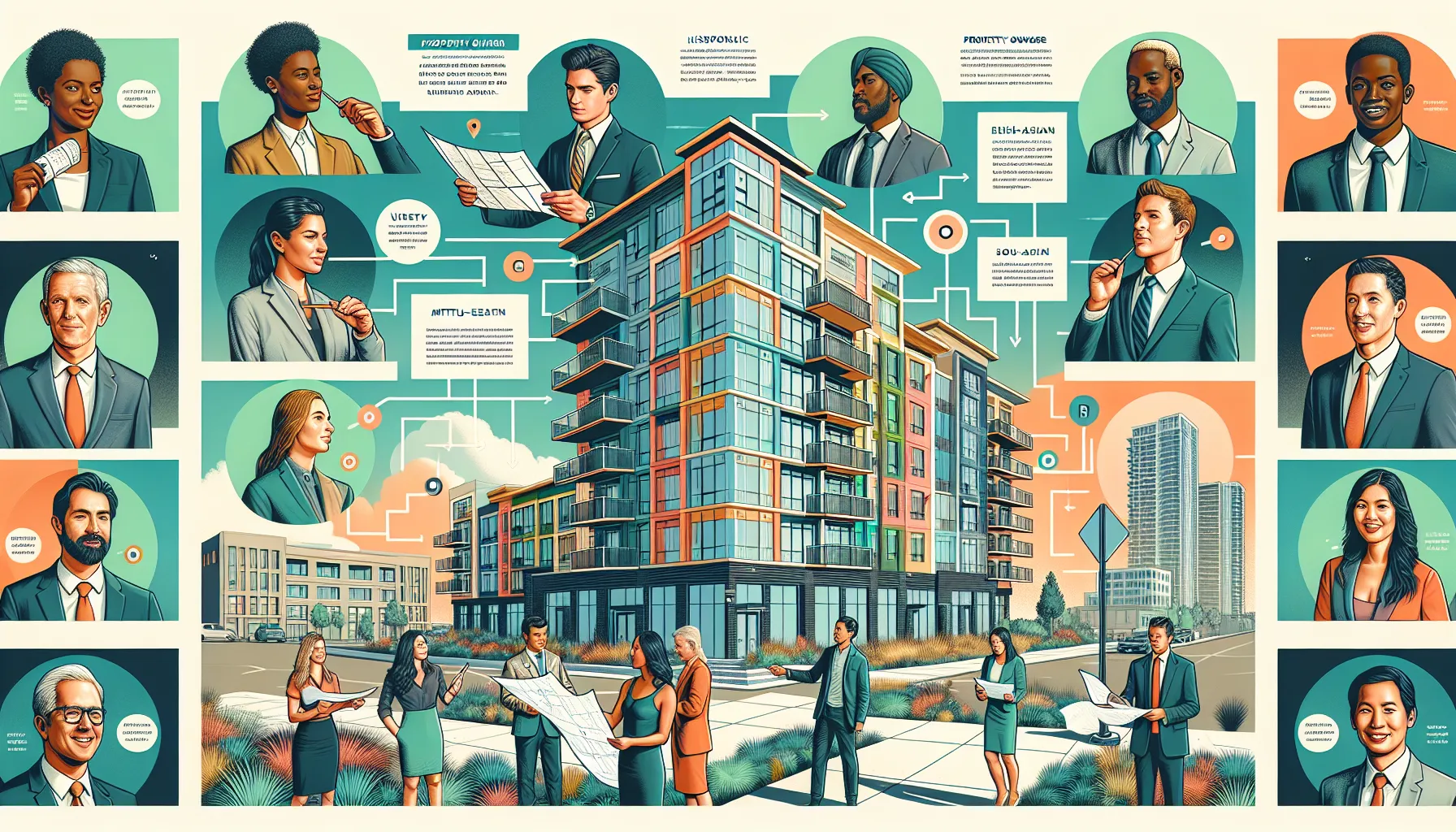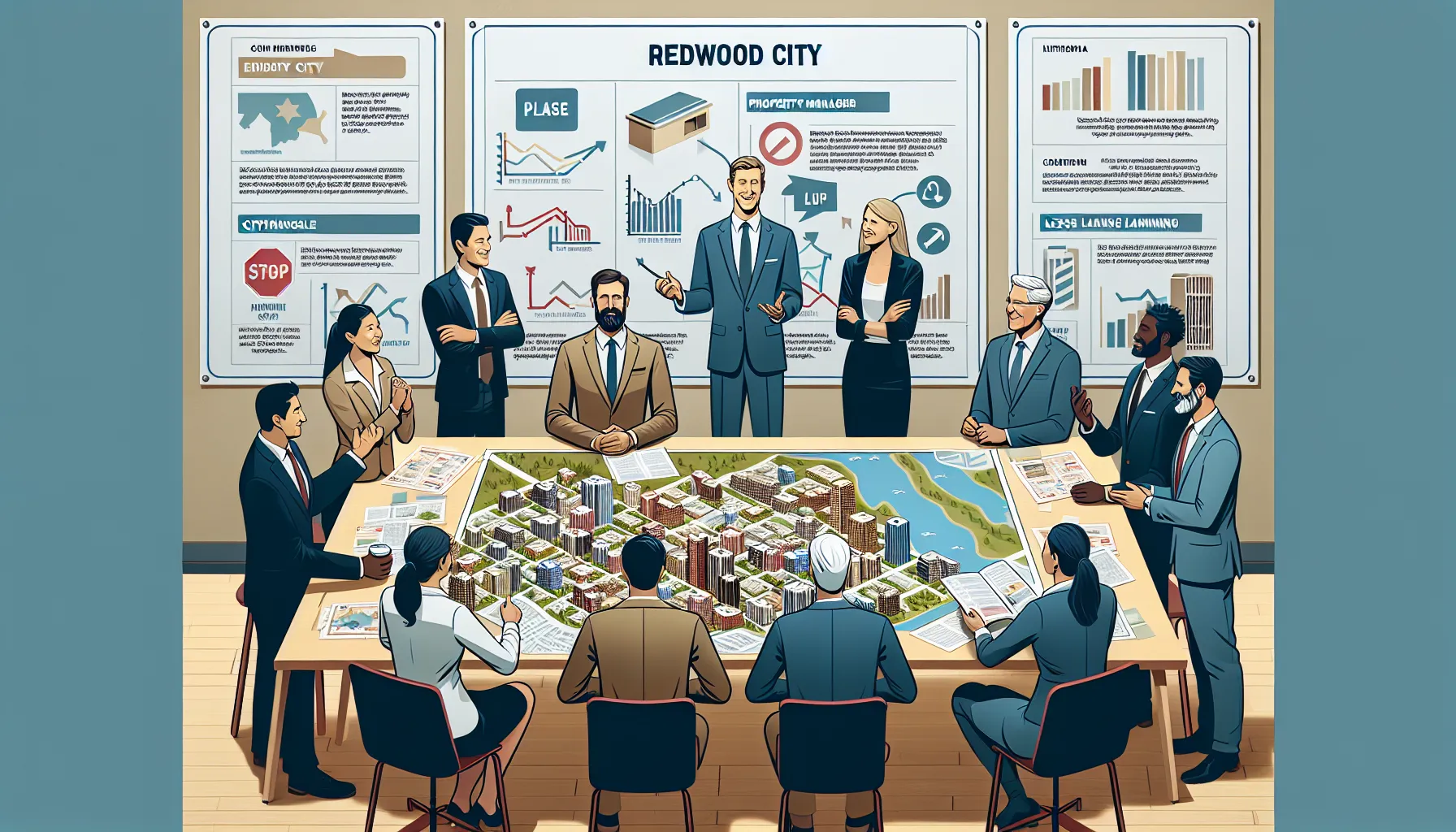Key Takeaways
- Urban lease planning in Redwood City requires balancing property goals with local regulations and tenant needs. Understanding zoning laws, market trends, and demographic shifts is essential for creating successful lease agreements.
- Redwood City’s economic growth presents unique opportunities for property owners. Aligning rental strategies with local business expansion, family demands, and zoning compliance can boost profitability and attract long-term tenants.
- Effective lease agreements include clear terms and risk mitigation strategies. Incorporating clauses on rent responsibilities, maintenance, and tenant behavior safeguards investments while reducing potential conflicts.
- Integrating sustainability and community-focused initiatives enhances property value and tenant satisfaction. Energy-efficient upgrades and alignment with local priorities, such as affordable housing, create competitive advantages.
- Challenges like population growth and balancing public and private interests require thoughtful planning. Researching tenant preferences and market shifts helps property owners adapt and remain competitive in a dynamic rental market.
- Leveraging technology and partnerships improves lease planning efficiency. Using data analysis tools and collaborating with local stakeholders ensures informed decisions that meet both tenant and community needs.
Urban lease planning in Redwood City can feel like a puzzle with many moving pieces. Whether you’re managing multiple properties or leasing out your first unit, the process often comes with questions. How do you attract reliable tenants? What strategies help maximize returns while minimizing stress? These are challenges many property owners face, and finding clear solutions is crucial.
Redwood City’s vibrant growth and demand for housing make it an appealing location, but this also brings added responsibilities for property owners. From understanding local regulations to creating agreements that protect your investment, every decision matters. With the right approach, leasing doesn’t have to feel overwhelming.
What if you could simplify the process while focusing on your goals? By approaching urban lease planning with clarity and the right strategies, you can achieve both peace of mind and financial success. Let’s explore how to make that vision a reality.
Understanding Urban Lease Planning In Redwood City
Urban lease planning in Redwood City involves balancing property goals with local regulations and market trends. Property owners face challenges such as regulatory compliance, tenant retention, and maintaining profitability. Addressing these challenges requires insight into the city’s leasing landscape.
What makes Redwood City unique? Its diverse population and dynamic economy create opportunities for long-term leasing success. However, aligning lease terms with tenant needs and broader housing policies demands a well-thought-out strategy. For instance, landlords often find success with flexible lease lengths that cater to professionals and families alike.
What elements matter most in urban lease agreements? Clear terms around rent, maintenance responsibilities, and renewal options are essential for minimizing conflicts. Redwood City’s active rental market also highlights the importance of competitive pricing. Understanding local rental trends enables landlords to set rates that attract tenants without compromising revenue.
How can property owners mitigate risks? Comprehensive agreements protect investments. Strong clauses covering late payments, property use, and termination rights safeguard against common issues. Many landlords achieve this by collaborating with advisors who specialize in Redwood City’s rental laws.
Urban lease planning isn’t just about tenant agreements. It involves engaging with community needs and economic demands while maximizing property value. By recognizing these components, property owners can confidently navigate Redwood City’s leasing environment. Have you considered how your lease strategy aligns with these priorities?
Key Factors Influencing Lease Planning

Urban lease planning in Redwood City involves analyzing multiple factors to create well-structured agreements that meet tenant and owner needs. Addressing these factors effectively increases rental profitability and minimizes risks.
Economic Growth And Development
Redwood City’s economic landscape contributes heavily to successful lease planning. With steady business growth and residential demand, owners can attract a mix of professional and family tenants. How can understanding local economic trends guide your leasing decisions?
Examining local employment rates and major industries helps predict tenant demand for specific property types. For instance, rising tech opportunities may draw young professionals seeking modern apartments. Evaluate how school districts and recreational spaces influence family-focused rentals. By aligning your property offerings with these economic drivers, you position yourself for success.
Zoning Regulations And Policies
Adhering to Redwood City’s zoning rules protects property investments. Each zone outlines permitted property uses, tenant activities, and building modifications. Do you know how these regulations impact your rental property type?
Check zoning maps and updates for commercial, residential, or mixed-use classifications. If you’re leasing a commercial space, confirm permitted activities like retail or office use. For residential properties, ensure parking and building occupancy complies with city ordinances. Proactive monitoring of these policies keeps your property compliant and avoids legal conflicts.
Benefits Of Urban Lease Planning In Redwood City

Urban lease planning in Redwood City offers property owners practical advantages to achieve leasing success. By addressing tenant needs and local requirements, owners can secure better outcomes for their investments.
Optimizing Land Use
Efficient land use increases the value of rental properties. By analyzing zoning laws and property design opportunities, landlords can customize spaces for residential or mixed-use purposes. Does your property layout maximize tenant satisfaction while meeting legal standards? Thoughtfully designed spaces encourage tenant retention and attract a wider range of renters.
Well-planned properties also lead to fewer disputes over boundaries, usage rights, and space allocation. For example, clearly assigned parking areas or amenities clarify responsibilities and boost tenant confidence. This approach contributes to a seamless leasing process.
Supporting Sustainability Goals
Reducing environmental impact attracts environmentally-conscious tenants. Incorporating energy-efficient appliances, optimizing natural light, and using sustainable building materials can lower utility costs for renters. Would your property benefit from integrating green upgrades to enhance its appeal? Thoughtful sustainability efforts not only enhance property value but also contribute to Redwood City’s ecological initiatives.
Long-term leasing also supports sustainability by reducing tenant turnover. Stable rental arrangements decrease the waste associated with frequent moves and renovations. These environmentally- and community-focused practices positively impact both landlords and tenants.
Challenges In Urban Lease Planning

Urban lease planning in Redwood City comes with multiple challenges that landlords need to address carefully. From finding a balance between public and private needs to preparing for a growing population, each aspect introduces its own complexities. How can property owners better manage these challenges to achieve successful leasing outcomes?
Balancing Public And Private Interests
Balancing the needs of tenants with community expectations often creates tension in urban areas. Property owners need to meet tenant demands while adhering to local policies that promote broader public interests. Redwood City’s focus on community development and housing standards requires thoughtful planning. Are rental properties supporting local goals, such as affordable housing or environmental sustainability? Clear communication with stakeholders and reviewing applicable ordinances can help align property use with community priorities.
Adapting To Population Growth
Redwood City’s population growth intensifies demand for rental units and adds pressure on urban infrastructure. Property owners face rising expectations to offer flexible leasing options and modern amenities. Growth also influences zoning requirements and tenant preferences, especially for families and professionals. How can rental properties remain competitive while accommodating diverse renters? Researching demographic trends and upgrading units to meet shifting needs can improve long-term tenant retention and property value.
Best Practices For Effective Lease Planning

Effective lease planning in Redwood City requires balancing tenant needs, local regulations, and investment goals. A structured approach helps avoid issues and improves lease outcomes.
Collaboration With Community Stakeholders
Building strong relationships with local stakeholders is essential. Engaging with city officials, neighborhood organizations, and other property owners allows me to stay updated on zoning changes and community priorities. For example, understanding local affordable housing initiatives helps align lease terms with broader housing goals. Open communication with these groups drives smoother approval processes and better property management outcomes.
When was the last time you reached out to local organizations to gain insights into tenant preferences? Maintaining these connections creates opportunities for partnerships and long-term growth.
Leveraging Technology And Data Analysis
I use technology to streamline the lease planning process. Tools that analyze local market trends help fine-tune rental pricing and identify areas for property improvements. For example, software that tracks energy usage or tenant satisfaction offers data-driven insights to guide investment decisions.
Do you utilize tools to monitor Redwood City’s rental trends and demographics? Staying informed through data analysis enhances decision-making and keeps properties competitive in the rapidly shifting rental market. I’ve found that even basic systems for tracking lease dates and maintenance schedules can significantly improve efficiency.
Conclusion
Urban lease planning in Redwood City demands a thoughtful and proactive approach to navigate its unique challenges and opportunities. By staying attuned to local regulations, demographic trends, and tenant expectations, property owners can position themselves for long-term success.
Balancing community needs with investment goals is key to creating sustainable and profitable leasing strategies. With the right tools, insights, and partnerships, it’s possible to maximize property value while contributing positively to Redwood City’s vibrant and growing community.
Frequently Asked Questions
What is urban lease planning in Redwood City?
Urban lease planning in Redwood City involves creating effective lease agreements while considering local regulations, tenant needs, and market trends. It is designed to help property owners attract reliable tenants, maximize returns, ensure compliance with zoning laws, and align with the city’s dynamic economy and housing goals.
Why is understanding local regulations important for leasing?
Understanding local regulations is crucial because it ensures that lease agreements comply with zoning laws, tenant activities align with permitted property uses, and legal conflicts are avoided. Adhering to these rules protects property investments and ensures smooth leasing operations.
How can property owners attract tenants in Redwood City?
Property owners can attract tenants by offering flexible lease terms, competitive rental prices, energy-efficient features, and family-friendly amenities. Responding to tenant needs and keeping properties updated with local economic trends enhances tenant retention and satisfaction.
What are the main challenges of leasing in Redwood City?
Key challenges include balancing tenant demands with public policies, adapting to population growth, meeting affordable housing requirements, and aligning with sustainability goals. Navigating these complexities requires proactive planning and collaboration with community stakeholders.
How can flexible lease terms benefit landlords?
Flexible lease terms accommodate varying tenant needs, such as shorter lease durations or tailored maintenance responsibilities. These agreements reduce conflicts, improve tenant satisfaction, and increase the likelihood of long-term leases.
Why is tenant retention important in Redwood City’s rental market?
Tenant retention reduces turnover costs, maintains consistent rental income, and strengthens property value. In Redwood City’s competitive market, retaining tenants helps landlords stay competitive and adapt to demographic changes effectively.
What role do zoning regulations play in lease planning?
Zoning regulations dictate permitted property use and tenant activities. Compliance helps landlords avoid legal issues, maintain property value, and align with community development plans, ensuring successful leasing.
How does Redwood City’s economy impact leasing strategies?
Redwood City’s growing tech sector and family-friendly environment attract diverse tenants. Property owners can leverage this by tailoring their rental offerings, such as amenities and pricing, to match tenant expectations and market demand.
What are best practices for effective lease planning in Redwood City?
Structured lease planning includes understanding local regulations, optimizing land use, collaborating with stakeholders, and leveraging technology for data-driven decision-making. These strategies ensure successful and sustainable rental operations.
How does incorporating sustainability benefit property owners?
Incorporating sustainability features, like energy-efficient appliances or eco-friendly designs, attracts environmentally-conscious tenants, reduces operational costs, and enhances community engagement, increasing property value and tenant retention.
